Buying Cream Legbar Chickens? What You Need to Know About Their Care
Published: March 30, 2024
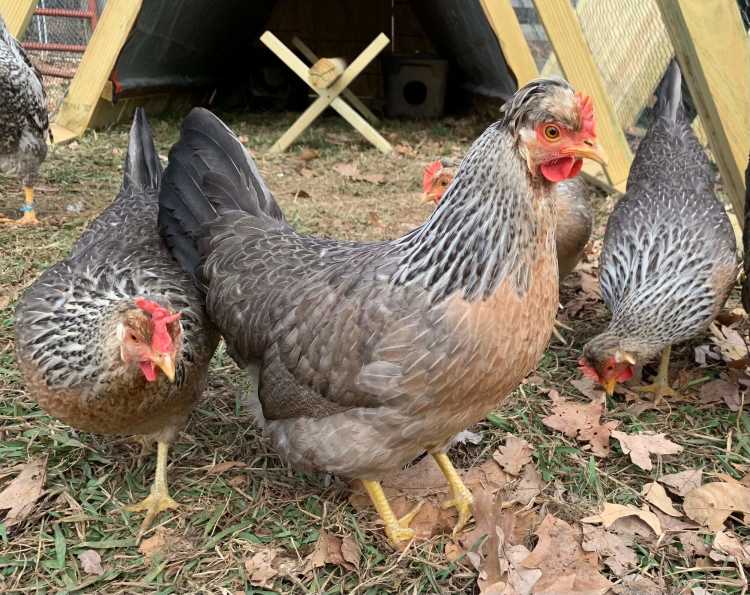
When it comes to Cream Legbar Chickens, success isn’t about mere survival; it's about understanding their unique needs. Being a Legbar Chicken keeper isn't everyone's cup of tea.
Every year, hobby farmers and homesteaders leap at keeping these blue-egg-laying divas, only to stumble when faced with their distinct care requirements.
Let us guide you through how to offer care while offering other nuggets of wisdom.
Unique Cream Legbar Chicken Characteristics
One of the most apparent unique traits of these birds is their blue eggs, but there is more to this bird than this. Let’s dive in.
The Unique Appearance of Cream Legbar Chickens
Cream Legbar Chickens carry an aura of regality and plume, which is difficult to miss. Their feisty look comes from unique physical traits that set them apart from your usual backyard poultry.
Physical characteristics
Body Type: Medium Size
Body Shape: Rectangular
Average Weight: 4.5 Pounds (Hens), 6 Pound (Rooster)
Every Cream Legbar hen and rooster is a sight to behold in its own right, courtesy of its distinctive physical characteristics. Their bodies are of medium size, boasting a rectangular shape.
The hens weigh about 4.5 pounds, while the roosters weigh around 6 pounds. They stand tall and proud, with a broad chest and well-spread tail, which stands at an angle of 45 degrees.
The robust legs are clean, without feathers, and are pale in color.
Head and color variations
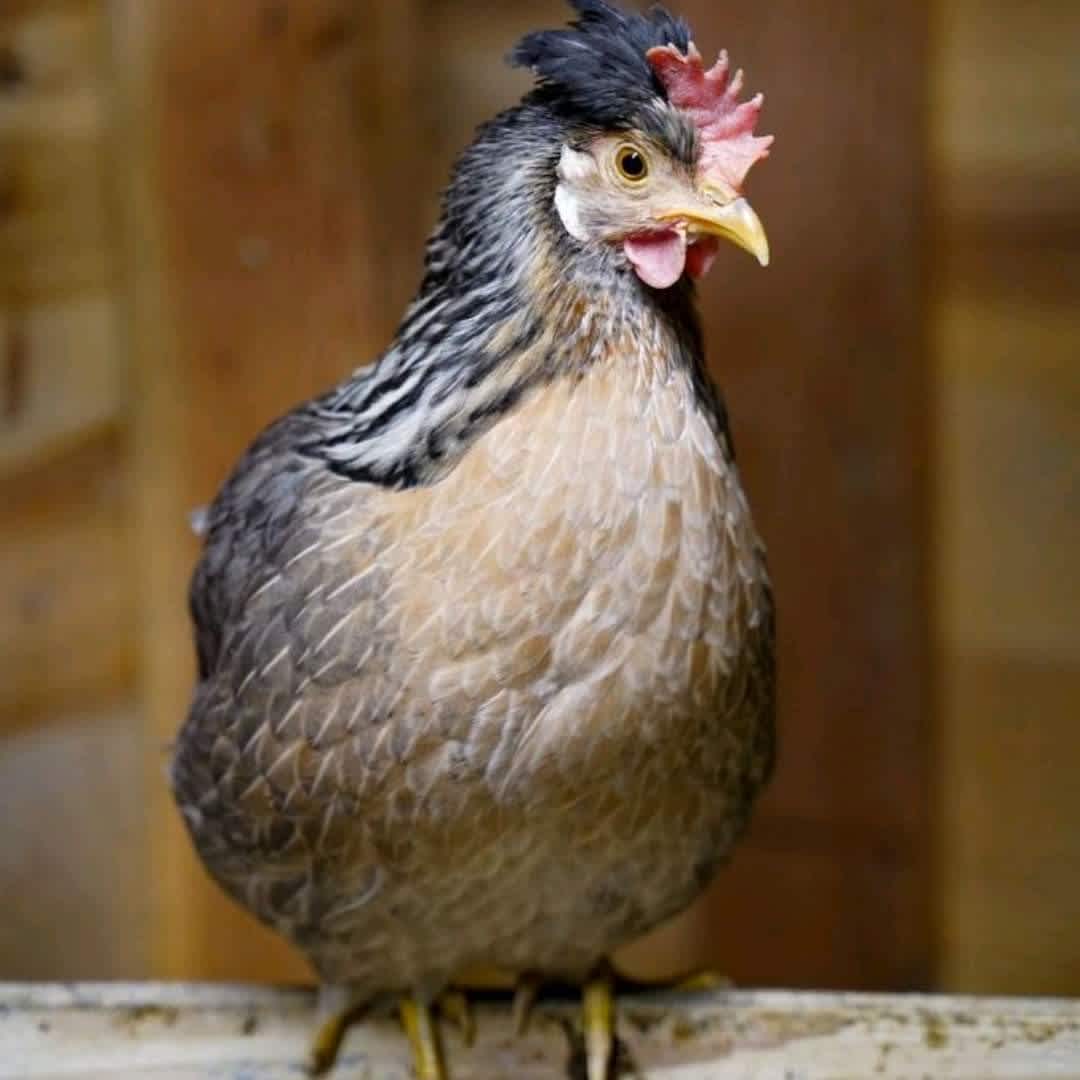
What further gives Cream Legbars an upper hand in the looks department is their unique crested heads. The crest is set well back and does not obstruct vision, giving them an almost punk-like appearance.
As for the color, hens flaunt a medley of hues- silver, grey, cream, and even gold, while roosters are more of a splash of charcoal grey and cream.
The Temperament of Cream Legbar Chickens
When it comes to behavior, Cream Legbar Chickens are no different from their appearance - full of surprises and pleasure.
Active, friendly, and intelligent
Despite their hedonistic appeal, these birds are far from being high maintenance. Their extraordinary intelligence makes them reasonably easy to manage. They're tireless explorers, always on the lookout for new adventures.
Cream Legbars are inherently friendly and social, harmoniously blending with other breeds. They are also cunning escape artists. Therefore, it is necessary to ensure a sturdy and high fence for their chicken run.
Foraging skills
But their intelligence isn't just for show—it also manifests astonishingly in their impeccable foraging skills. They are self-reliant birds who love to scour the land for tidbits. They're adept at keeping pests at bay.
Their excellent foraging ability also reduces reliance on supplemental feed, benefiting your pocket while keeping them healthy and occupied.
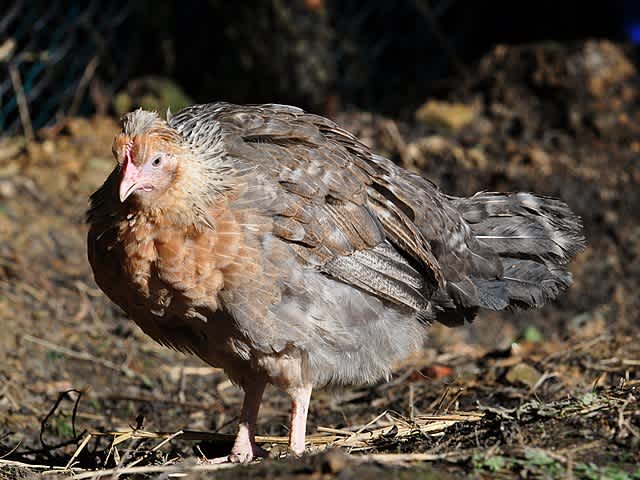
Caring for your Cream Legbar Chickens
Housing Requirements for Cream Legbar Chickens
A vital part of any chicken's well-being is their housing. Cream Legbar chickens, known for their active nature, require a particular living scenario that complements their behavioral disposition. Ensure your coop is spacious enough for these active birds to roam freely. Remember, crowded chickens are stress-prone chickens.
How many square feet does my legbar chicken need?
We recommend 4 square feet per bird for optimal health if they are free-range running. If they are mostly confined to a chicken coop, we recommend 10 square feet per legbar chicken.
How much run space does my chicken need?
In addition to the coop space, you’ll want at least 10 square feet of additional run space per legbar chicken.
Of course, if you were to have 10 chickens, then you would multiply these calculations by 10.
Security and Space
It may seem obvious, but never compromise the security of your chicken coop. A minor overlook could swiftly turn into an opportunistic predator's banquet. Cream Legbars are a favorite prey for many predators, including coyotes and foxes.
An additional tip to help with security is to simply allow them more free-ranging space. Not only does this significantly improve a cream legbar’s quality of life, but due to their natural foraging ability, they have a better chance of evading predators.
Their stress levels will drop with ample space, leading to healthier laying patterns and improved immunity.
Perches and Nesting Boxes
Something to keep in mind is to supply an ample number of roosting and nesting boxes in your coop. Chickens, by nature, are disposed to perching off the ground, and roosts provide a suitable platform.
Did you know? Before being domesticated, chickens have been perching off the ground for 1000s of years as a natural survival instinct behavior
More interestingly, these birds have a particular affinity for private and secluded nesting boxes. Providing several roomy nesting spots would contribute hugely to their optimal productivity.
Feeding Cream Legbar Chickens: What's on the Menu?
Cream Legbar chickens require a balanced diet to thrive like any other living thing. This is not only for nourishment but also for egg-laying productivity.
Dietary Needs
Cream Legbars dietary needs are similar to other breeds. They have a seemingly insatiable fascination with foraging, implying access to insects, seeds, and green matter are key elements of their diet.
What can legbar chickens eat?
Fresh, clean water all-day
Fresh fruits and vegetables
Quality commercial feed should make up the majority of their diet
Grit to provide essential minerals for digestion
Anything less leads to deficient birds and, in many cases, deficient egg production.
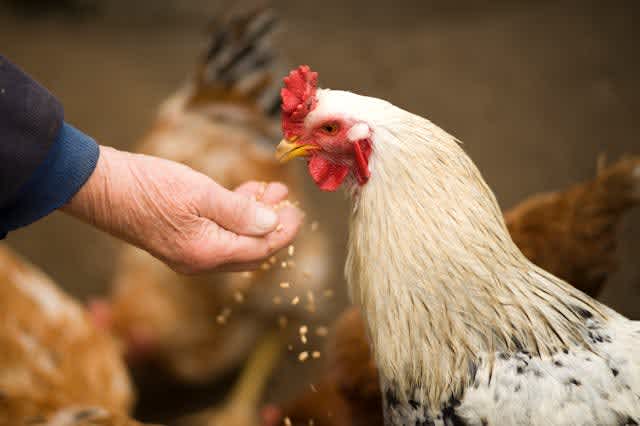
Lastly, always appreciate the importance of fresh water. Chickens, and in particular this breed, are perpetually drinking. With physiology akin to ours, their water requirement increases during hotter weather. To put it concisely, always have a fresh and clean water supply ready for your birds.
With an environment set up to appeal to their instincts and a complete diet, your Cream Legbar chickens will take care of the rest, giving you the pleasure of their uniquely colored eggs.
Cream Legbar Chicken Egg Production: What to Expect
Poultry lovers and commercial farmers often seek the Cream Legbar breed due to its impressive egg-laying capacity. Let’s see what it takes to make these colorful additions to your farm.
The Egg-Laying Capacity of Cream Legbar Chickens
On average, a healthy Cream Legbar hen can lay approximately 200-230 eggs annually, surpassing the production of many other chicken breeds. Though they're known for their high production rate, individual results may vary based on care, diet, and overall health.
Cream Legbars hold another pleasant surprise regarding the appearance of their eggs. They lay distinctively colored eggs that range from blue to green, sometimes with a hint of turquoise - making them a standout from the usual brown or white eggs one would typically find.
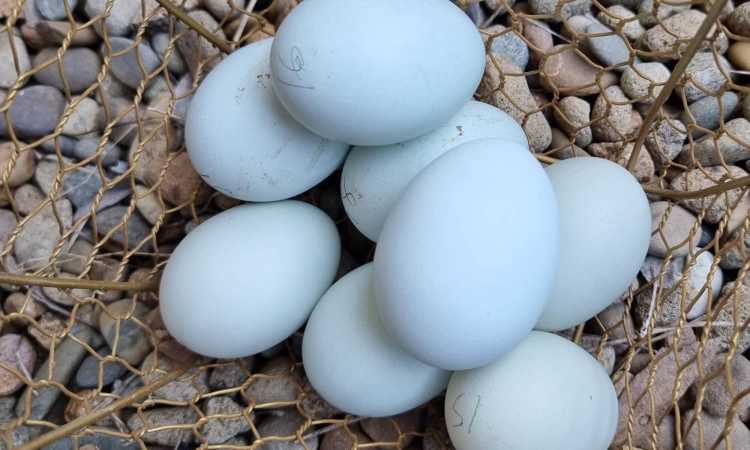
The eggs are not just eye-catching, but also of good size, typically categorised as medium to large.
This blend of quantity, quality, and uniqueness makes Cream Legbar chickens a fantastic addition to any flock.
When do Cream Legbars Start Egg Laying?
While some chicken breeds take longer to mature and begin laying eggs, Cream Legbars are early bloomers in this aspect.
Typically, these chickens start laying eggs around 5-7 months old. Some factors that can influence this age range include the birds' diet, health, and care conditions.
Implement optimal care practices to ensure a healthy, productive life for these chickens. As mentioned above, providing them with plenty of premium feed and fresh water, alongside maintaining clean living conditions, can pave the way for healthy egg laying.
Remember, these birds are both practical and beautiful—a combination that renders them an ideal choice for a backyard or commercial flock. Not only do they have an outstanding egg-laying capacity, but their eggs' unique color also increases their appeal, making their care and upkeep a worthy endeavor for any chicken enthusiast.
How much can you sell Cream Legbar Eggs for?
On average, we have seen $6–8 per egg from hatcheries, but this price can vary slightly as the market rates can change depending on particular supply in your area.
Are Cream Legbars Worth the Investment?
If you’re thinking about investing in these birds, you’ll want to know if this will become profitable at some point.
The Average Price of Cream Legbar Chickens
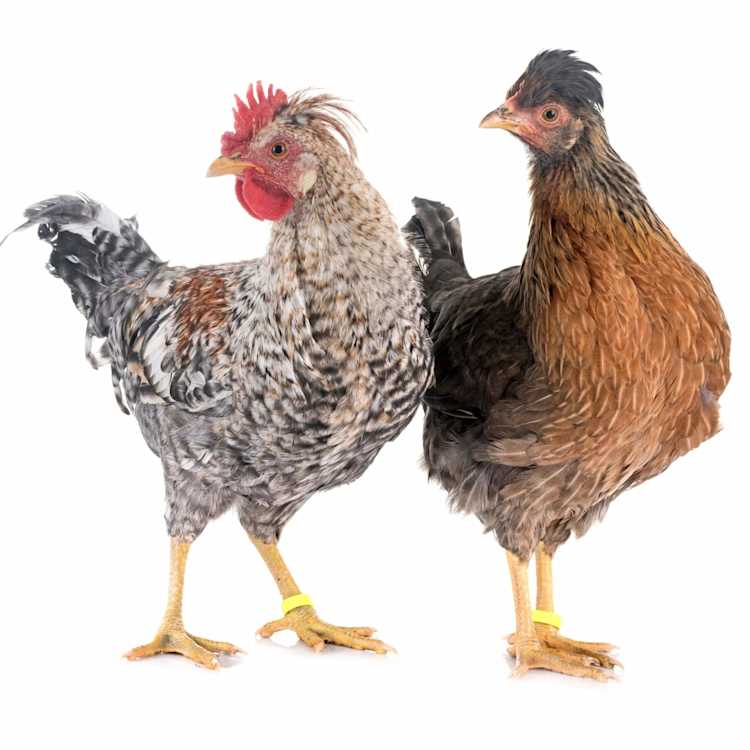
Cream Legbar chicken price can feel like a roller coaster ride without the fun. It's affected by several factors, but before we get started on the characteristics that affect pricing, let's establish an average price range.
Average Cream Legbar Prices
The average price of Cream Legbar chicks is between $18–$60, and for fully feathered chickens, $35–$90 per bird.
Female Chicks: $40–$60
Male Chicks: $18–$36
Adult Hens: $60–$90
Adult Roosters: $35–$70
You’ll be able to find multiple online hatcheries that sell this particular breed with a few Google searches. These prices aren’t set in stone and can be influenced by various factors like the chicken's age, its health condition, and the market's supply and demand.
Now, let's break down the factors influencing the price:
Age of the Chicken
It's interesting to see how age affects the cost of a Cream Legbar chicken. Young chicks usually have a lower price tag as they require significant care and feeding before they can start laying those precious blue eggs.
On the contrary, hens that are about to lay eggs could cost a bit more due to their immediate productivity advantages.
Health and Genetics
A chicken's health and genetics play a critical role in its valuation. A healthy bird with a proven lineage of high egg production would undoubtedly fetch a higher price than a bird with health problems or unknown genetics. So, it’s vital to be aware of a bird’s health and genealogy before purchasing.
Signs of good health include:
Eyes that are bright and clear, no swelling
Combs and Wattles that are firm, bright
Droppings that are firm and dark brown with white urates
Feathers that are shiny and full without bald patching
Behavior that is alert and active, regularly drinking, eating, and interacting with other chickens.
We’ll discuss more on this later.
The Return on Investment: Egg Production vs. Cost
It's time to calculate if a Cream Legbar chicken could give you a decent bang for your buck in egg production.
Cream Legbars are known for their prolific egg-laying abilities, averaging over 200 blue to greenish eggs per year.

Plus, their eggs are typically larger than those of other breeds. This quality makes them a top pick for those interested in egg production and selling unique, colored eggs.
Given that the lifespan of a Cream Legbar is typically 5–10 years, let’s do some math, shall we?
We’ll want to take conservative numbers.
Say we purchase 5 Cream Legbars that are at the cusp of their first production, and we pay a top dollar of $90 per chicken, and we use a low production count of 180 eggs a year. We can expect the following if each egg sells for $5 (well below average):
Initial investment
$90 x 5 Cream Legbars Chickens = $450
Annual Expenses x 5 years
120 pounds of premium feed per year x 5 Cream Legbars at $0.65 cents a pound x 5 years = $1,950
The housing budget $2000 for the entire coop, including regular maintenance
Veterinary Costs $100 per year per chicken x 5 years = $2,500
Miscellaneous costs $200 per year per chicken x 5 years = $5000
Total Investment for 5 Years
Purchasing Cream Legbars $450
Feed $1,950
Housing $2000
Veterinary $2,500
Miscellaneous $5000
Total: $11,900 ($2,380 per year)
Revenue Estimate for 5 Years
5 Cream Legbars x 180 eggs per year x 5 years x $5 per egg = $22,500 for the lifespan of this investment round (or $4,500 per year).
Estimated Profit
$22,500 - $11,900 = $10,600 of profit!
And while their upfront cost might be a little high, the return on the initial investment is promising, given their life span and egg production over time.
To sum up, Cream Legbar chickens offer an enticing return on investment opportunity, both in terms of profit and delightful blue eggs.
Raising Cream Legbar Chickens: Tips for Success
Selecting Your Cream Legbar Chickens
Choosing the suitable Cream Legbar chick or hen is the cornerstone of a thriving farming experience. The healthiest chickens display various physical and behavioral signs indicating their overall well-being.
A robust bird has bright, alert eyes, clean feathers, and an active, inquisitive demeanor. They maintain a healthy weight and display no walking or breathing difficulty.
The comb, a significant indicator of chicken health, should appear bright and vibrant, with no signs of paleness, swelling, or discoloration. A lack of external parasites, such as lice or mites, is also crucial.
Their appetite and droppings can provide additional insight into their health status. Healthy chickens manifest an active appetite and produce firm, well-formed droppings free of unusual colors or textures.
Handling and Socializing Your Cream Legbar Chickens
Establishing a bond with your Cream Legbar Chickens inevitably aids their development and happiness. Regular handling and interaction accustom them to human presence, minimising their stress levels and promoting a calm, serene atmosphere within the coop.
Start handling your hens from a young age, using slow and careful motions to avoid inducing anxiety or fear. Speak gently to them and, if possible, feed them directly from your hand. This will not only strengthen your bond but also help to socialize them with other chickens.

Introducing new practices and features, such as different food types or coop additions, should be done progressively. Sudden changes can induce stress, impairing their health and productivity.
Maintaining a consistent routine provides a stable environment for raising Cream Legbar Chickens.
What is a Cream Legbar Chicken? A Brief History
Now that you can select and maintain these beautiful birds, let’s learn about their history.
The Origin of Cream Legbar Chickens
The Cream Legbar chicken has an intriguing lineage that developed throughout the 20th century. The breed resulted from a vision from two determined geneticists in Cambridge, R. C. Punnett and M. S. Pease.
Their mission was to create an auto-sexing, productive egg layer, a solution to the expensive and time-consuming traditional sexing methods in the poultry industry.
By crossing the Brown Leghorn and the Barred Plymouth Rock breed and later incorporating the Araucana (known for their blue eggs), they culminated in creating the Cream Legbar.
These efforts initiated in the 1930s eventually saw success in the 1950s, marking the cream variant of the Legbar breeds.
But the Cream Legbar was on the verge of extinction by the 1970s. Despite their rarity, they are protected by chicken fanciers and poultry associations worldwide, who are keen on preserving the breed's uniqueness and longevity.
The Popularity of Cream Legbar Chickens
Cream Legbars have a strong support base among poultry keepers and chicken breeders alike. Their charismatic appearance and productive nature are hardly surprising.
They are a sight to behold, contrasted by a crest of ornate feathers and spectacle-like eye markings. Combined with their social and lively disposition, they are often considered charmingly 'chatty.' However, it isn't merely their impressive aesthetics that gain them fans.
Their significant egg-laying ability, producing over 200 blue eggs annually, sets them apart. This unique production value and low maintenance make them a preferred breed for avid poultry enthusiasts aiming for a fruitful and uncomplicated flock.
The Unique Selling Points of Cream Legbar Chickens
Two key features set the Cream Legbar apart in the poultry world: their auto-sexing capacity and blue egg-laying prowess.
Auto-sexing means, unlike some breeds, you can determine the gender immediately after hatching based solely on color variation. This feature is an invaluable time-saver for many in the industry, where other methods prove laborious and costly.
Additionally, their renowned blue eggs deliver a colorful twist to your egg basket and a nutrient-rich and delicious tabletop delight.
Cream Legbar Chickens tick many boxes for poultry enthusiasts, from their striking appearance and captivating history to streamlined breeding and rewarding egg-laying abilities.
Common Questions About Cream Legbar Chickens
After exploring the history and heritage of Cream Legbar chickens, it's natural to have questions about these stunning blue-egg layers still.
Are Cream Legbar Chickens Good Layers?
Yes absolutely, a defining character trait of Cream Legbars, beyond their beautiful crests and striking blue eggs, unsurprisingly falls to their egg-laying prowess. As a breed developed with production in mind, they rightfully earn their reputation as prolific layers.
Cream Legbars typically commence egg-laying around 5-6 months of age. Once in production, they swiftly rise to the challenge, laying approximately 200 large, blue or green-hued eggs annually.
This extraordinary performance makes them one of the top choices for backyard poultry enthusiasts looking for a bounty of colored eggs.
If you seek a dependable, colorful layer to add to your chicken coop, the Cream Legbar might be your ideal candidate. Their abundant egg-laying is matched only by their resilient nature, which enables them to adapt and thrive in various climates and conditions.
How Long Do Cream Legbar Chickens Live?
Consistent with many heritage breeds, Cream Legbars are known for their commendably long lifespan of 5–10 years with optimal care and genetics.
This impressive longevity and their productive laying cycles make Cream Legbars an exceptional choice for those seeking a long-term addition to their backyard flock.
As with all livestock, longevity is impacted by many factors, including genetics, diet, environment, and flock management practices.
Therefore, providing your Cream Legbar chickens with a balanced diet, clean water, secure housing, and regular veterinary checks will increase their chances of reaching—or surpassing—their expected lifespan.
Are Cream Legbar Chickens Good for Meat?
While Cream Legbars are best known for their prolific egg-laying abilities and fascinating blue eggs, it's worth querying their viability for meat production.
Generally, Cream Legbars aren't the top choice for meat production. Their primary purpose is egg production, and their body frame reflects this, being leaner and lighter than classic meat breeds.
However, this doesn't denote these birds as useless in this capacity; they can still provide a decent quantity of meat.
Possessing a classic "English" body type, Cream Legbars are typically leaner and have smaller breasts than commercial broilers but still deliver a satisfactory meal when required.
However, they're not typically raised for meat due to their remarkable value as consistent layers of larger, unique eggs. It's always important to match the purpose and expectations of your flock with the right breed selection.
The Pros and Cons of Raising Cream Legbar Chickens
Raising Cream Legbar chickens has its own set of ups and downs. For starters, these birds are fantastic layers, churning out sky-blue eggs consistently throughout the year.
This breed is also known for its active and lively nature. Additionally, their sex-linked chicks — easy to distinguish right at birth — are ideal for folks who don't appreciate the guessing game.
On the downside, Cream Legbars often require more supervision due to their flighty nature. They tend to escape the coop and run off if not securely fenced.
Moreover, their egg production may decline after the first few years, and they're not best suited for meat production.
Is the Cream Legbar Chicken Right for You?
Cream Legbar chickens might be the perfect fit if you're interested in collecting beautiful blue eggs and raising a flock of dynamic, lively birds.
But if you envision a backyard full of calm, friendly poultry or seek a dual-purpose breed, you should look elsewhere.
This breed thrives with a caregiver who appreciates their spirited character and has time to devote to their quirks and needs. If you're prepared for the increased management about flock security and you're not primarily concerned with meat production, Cream Legbars might just be your feathered match made in heaven.
Time for Flock Flourishing: Elevate Your Cream Legbar Chicken Care Journey
Elevated nourishment, enrichment, and a keen understanding of Cream Legbar chicken's health can dramatically enhance your care journey. Remember, patience is key – these hens are high producers, and their subtly speckled, sky-blue eggs will prove worth the wait.
The knowledge you've gleaned is a stepping stone to better chicken care — a flourishing flock means healthier hens, tastier eggs, and more vibrant clucking in the coop. You've cracked the egg of mystery; now, enjoy the results.
As you plot your course, consider involving a local vet in your chicken-care journey. Their expertise will add a layer of reassurance should any health hitches arise.
Can you think of a better way to start the day than hearing contented clucks from a healthy, happy hen under your watchful care?
Keep track of all your cattle with the #1 Cattle Management Software
Try out Ranchr today for free